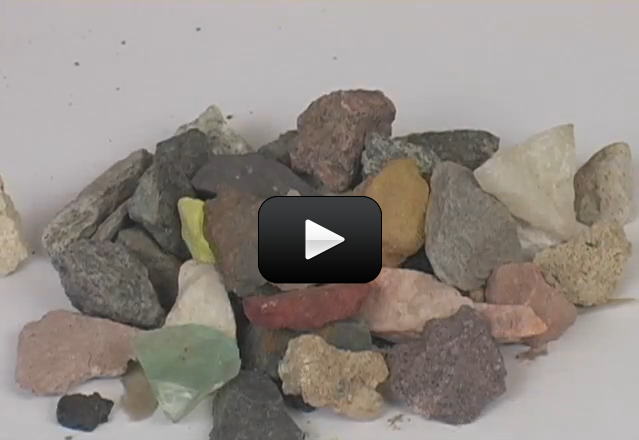Today you get to sort and identify as many rocks as you can as you test for streak, hardness, fluorescence, color, magnetism, chemical reactions, and more with this unique set of rocks. You may have to do a little research on the ones that are not yet familiar to you!
[am4show have=’p8;p9;p30;p57;p79;’ guest_error=’Guest error message’ user_error=’User error message’ ]
Materials:
- “Washington Student Rock Pack” (see list below for samples that are included)
- Penny
- Nail
- Streak plate
- Water in a graduated container
- Scale that measures in grams
- Longwave UV light source
Download worksheet and exercises
NEW! I’ve improved the worksheet, so you can download the latest edition here.
- You’re first going to classify your pile of rocks right along with the instructional step–by-step video. So fire up the video and get your materials out as you complete the data table.
- You’ll be testing for color, streak, hardness, density, luster, cleavage, fracture, tenacity, acid reaction, and fluorescence. Enjoy your third real geologist rock hunt!
- Here are the minerals and rocks included with this set:
- Calcite
- Calcareous Tufa
- Pyroxene
- Limestone
- Gypsum
- Conglomerate
- Amphibole
- Fossiliferous Limestone
- Quartz
- Sandstone
- Mica – Muscovite
- Shale
- Feldspar – Microcline
- Bituminous Coal
- Feldspar – Plagioclase
- Clay
- Bauxite – Aluminum Ore
- Porphyry
- Limonite – Iron Ore
- Obsidian (or Pitchstone)
- Hematite – Iron Ore
- Felsite
- Pyrolusite – Manganese Ore
- Pumice
- Magnetite – Iron Ore
- Basalt
- Copper Ore
- Gabbro
- Pyrite – Iron-Sulfur Ore
- Granite
- Fluorite
- Slate
- Sulfur
- Gneiss
- Barite
- Marble
- Graphite
- Mica Schist
- Talc
- Quartzite
[/am4show]


This video shares information on comparing meteorites to lodestone: https://www.sciencelearningspace.com/2019/02/meteorites-5/
Hey, how can you tell lodestone from a meteorite?
The streak you are seeing left behind is a tiny bit of crushed up powder trail of the mineral you are streaking across the plate. The streak plate is usually harder than most minerals, so that’s why it works. If you test a mineral harder than the streak plate, you’ll get part of the streak plate turning into powder on the mineral.
Hi Aurora, it’s Andie. When I was testing shale for a streak test, on my black and white streak plates I found a cream colored streak on the black one and a grey streak on the white one. Why is this happening?
That’s hard to say without seeing it, and since fluorescence varies so much with geographic location, it’s hard to know what got mixed in with your sandstone! It’s a mineral of some kind… what if you take it to your local rock shop and ask your local expert? That might be your best bet!
Hi Aurora, it’s Andie. When I was testing my red sandstone for florecence, I found something strange. When I held my UV flashlight to sandstone I saw a bright neon pink speck in one place on the stone. What do think it is?
Lodestone is a magnetized piece of magnetite, which are naturally occurring magnets.
Hi Aurora, why is magnetite AKA loadstone